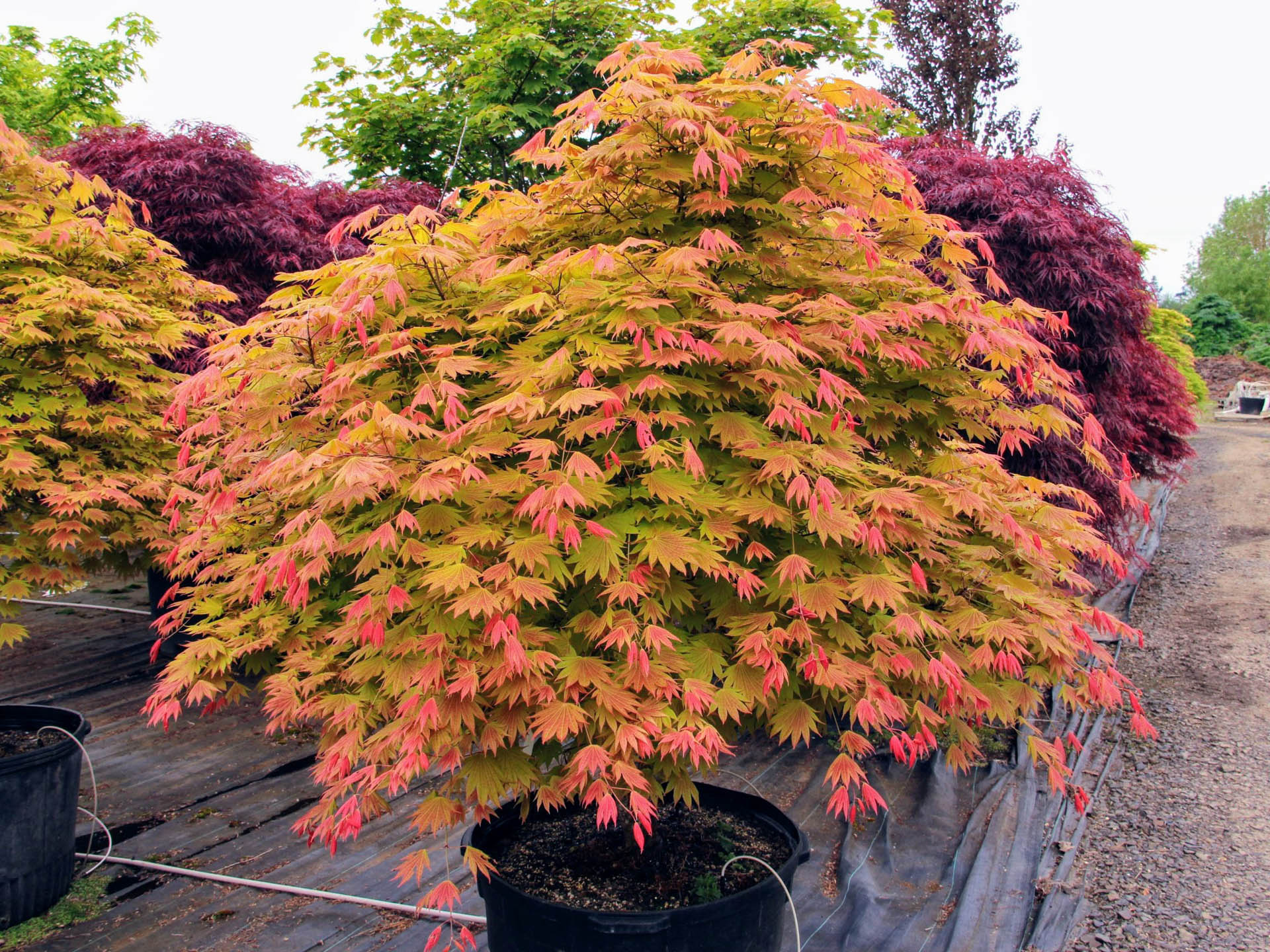


It is precisely for this reason that the tree is considered the crown jewel of a garden. This is why places with Japanese maples planted all along come alive. It is known for its foliage that is thick and bright and very lively. The tree is so gorgeous and picturesque and it changes color in the fall. The best part about the Japanese maple is that these trees come in several varieties, shapes, sizes and leaf colors. Remember those postcards you receive from friends living abroad or see in photo books or magazines? It is the Japanese maple that adds to their beauty and charm. The tree is native to Japan and Korea and is revered for its ornamental properties. In fact, the Japanese maple, or Acer plamatum as it is scientifically called, is one of the most gorgeous trees to have adorned the Earth. Japanese maple has long been cultivated in Japan and was introduced into cultivation in Europe in the early 1800s.A blooming Japanese maple with its majestic foliage in an autumn landscape is what dreams are made of. On the Chinese calendar, October is represented by Japanese maple leaves. Leaves feel similar to paper and are used to make bouquets in Japan. Relatively trouble-free given appropriate cultural conditions. Maple trees provide homes, shelter and food for wildlife. Japanese maple has very few insect or disease problems. Plants can be propagated by seed and softwood cuttings. Transplant balled and burlapped tree or as a container-grown plant into moist, high organic, well-drained soil. Protect trees from harsh winds and late spring frost. Trees do best in moist, fertile, well-drained soils. Young trees tend toward a medium growth rate, 10 to 15 feet over a 10 year period. The hardiness zone for the species form is zone 5. Japanese maple is a magnificent specimen or accent plant and performs well in a grouping or in a shrub border.ĭepending on the cultivar, USDA zones from 5 to 8. It exists in a multitude of forms that provide a wide range of sizes, shapes, and colors. It is one of the most versatile small trees for use in the landscape. Japanese maple is a terrific garden plant. Some of the best known cultivars are ‘Moonfire’, ‘Dissectum’, ‘Bloodgood’, and ‘Osakazuki’. The cultivars vary greatly in their cultural requirements. Characteristics such as leaf shape and color and growth form (i.e., upright growing type and dwarf type) have all been carefully selected to produce a vast range of cultivars. There are some 300 cultivars to choose from. The cultivation and selective breeding of Japanese maple trees goes back over three centuries. Samaras ripen between September and October and are scattered by wind. Flowers bloom between May and June and are insect pollinated.įruit is a winged seed called a samara they are green to red and ½ to ¾ inch long. The small, reddish flowers are borne in stalked, umbrella-shaped clusters. Summer color is green and autumn color varies from orange to yellow to red to purple. Leaves of the species form are oppositely arranged, hand-shaped, 2 to 5 inches long and have 5 or 7 lobes. There is great variation in this species due to the large number of cultivars in the trade. tall with a spread equal to or greater than the height. The habit is rounded to broad-rounded, with a layered branching structure similar to flowering dogwood. The plant can be grown as a small single-stemmed tree or large multiple stemmed shrub. Japanese maple is a small deciduous tree or large shrub with a broadly spreading crown. The tree was introduced to England in 1820. It has been long cultivated by the Japanese. Japanese maple grows in Japan, central China and Korea. Japanese maple refers to the tree’s native habitat of Japan. Acer is Latin for “sharp” and may also be from the Celtic ac, which means “hard” in reference to the wood palmatum means “hand-like” and refers to the shape of the leaves.


 0 kommentar(er)
0 kommentar(er)
